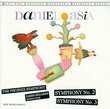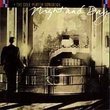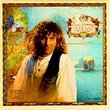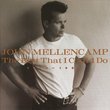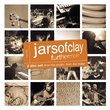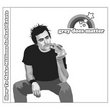| All Artists: Lionel Friend Title: RAWSTHORNE: Violin Concertos Nos. 1 and 2 / Corteges Members Wishing: 0 Total Copies: 0 Label: Naxos Release Date: 7/29/2009 Genre: Classical Styles: Forms & Genres, Concertos, Symphonies Number of Discs: 1 SwapaCD Credits: 1 UPC: 636943424025 |
Search - Lionel Friend :: RAWSTHORNE: Violin Concertos Nos. 1 and 2 / Corteges
 | Lionel Friend RAWSTHORNE: Violin Concertos Nos. 1 and 2 / Corteges Genre: Classical
RAWSTHORNE: Violin Concertos Nos. 1 and 2 / Corteges by Lionel Friend |
Larger Image |
CD DetailsSynopsis
Album Description RAWSTHORNE: Violin Concertos Nos. 1 and 2 / Corteges by Lionel Friend Similarly Requested CDs
|
CD ReviewsThe Neo-Baroque Art of Alan Rawsthorne Thomas F. Bertonneau | Oswego, NY United States | 11/05/2000 (4 out of 5 stars) "Although Alan Rawsthorne (1905-1971) has never enjoyed the high profile of Benjamin Britten, Michael Tippett, or William Walton, he remains one of those "respected presences" acknowledged in the critical literature while little heard. He wrote in a more calculatedly modernistic vein than either Britten or Walton and died young compared to Tippett, who produced more and imposed his style on his audience through shear endurance. Rawsthorne first came to public attention in the 1930s, with a "Theme and Variations for Two Violins" (1937) and "Symphonic Studies" (1939) for orchestra. Both scores attested to his baroque orientation. The "Symphonic Studies" showed, in addition, Rawsthorne's symphonic ambition, for aside from being a passacaglia, it also succeeds in integrating those "large-scale contrasts" out of which the tension proper to symphonic form is developed, according to Hans Keller. Rawsthorne would eventually write three symphonies properly named (1950, 1959, and 1964), two concertos for violin (1948 and 1956), two for piano (1942 and 1951), one for cello (1966), and one for two pianos (1968), all with orchestra. A number of string-orchestra works, overtures, and chamber essays fill out his catalogue. The music speaks in a distinct (but recognizably English) voice. The two concertos for violin and orchestra assembled by Naxos (and joined on the program by the overture "Cortèges" [1945]) make a fair representation of Rawsthorne's art. The First Violin Concerto, which Rawsthorne composed after his discharge from wartime military service (he achieved the exalted rank of sergeant-major), comprises two large symphonic slabs, mostly in slow tempi, that give the orchestra equal status with the solo instrument. The First Movement begins with the solo building on a four-note, rising-and-falling, motif, taken up by the orchestra and expanded lyrically and passionately. Some of this movement appears to conform to the passacaglia formula of thematic variation and development over a repeating invariant countertheme in the bass. The Second Movement, dominated by a six-note motif that rises where the four-note motif of the First Movement fell, accelerates gradually from andante to allegro and from the minor to the major key. Rawsthorne dedicated this score to William Walton. The Second Violin Concerto, from eight years later, exhibits a more orthodox structure (three movements) than the First. Its First Movement, generally serene, recalls Holst; its Second Movement, punctuated by an edgy, slightly dissonant fanfare, has a peculiarly nocturnal atmosphere. The Concerto's Third Movement comprises a theme and variations - that most English of compositional forms and one that is ubiquitous in Rawsthorne's oeuvre. Soloist Rebecca Hirsch brings the right combination of lyric freedom and muscularity to the composer's long lines. "Cortèges," in the plural, bears the description "Fantasy Overture." From the war-years, it self-consciously takes up the British tradition of the processional, and reminds us, in its shadowy way, of composers as different as Elgar ("Cockaigne") and Holst ("Egdon Heath"). Lionel Friend leads the BBC Scottish Symphony Orchestra in convincing performances." Authoritative performances of major British Composer's Music mahlerii@aol.com | Richfield, MN | 01/18/1999 (5 out of 5 stars) "Rawsthorne is relatively unknown in the US. This cd from the ever-enterprising Naxos people gives us a low priced sampler of his music. Violinist Hirsch does admirably and the orchestra is fine also. The music is dark in nature and is not easy-listening! The overture is somewhat lighter in nature. The musical style seems atonal but not twelve tone. An admirable disc, but I shall report if I end up loving these works rather than admiring them."
|

 Track Listings (6) - Disc #1
Track Listings (6) - Disc #1